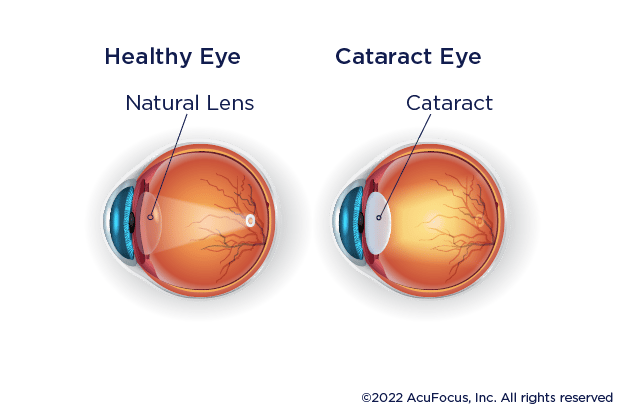In order to see, the eye requires light. But the pathway of light through the eye is not always a straight one. What happens when disruptions along the way cause too much or too little light and distort the images our eyes send to our brain? And what impact does this have on people considering cataract surgery? Here we explore these questions and more.
The Human Eye as a System
The human eye is a powerful organ. Each part of the eye plays a specific role, yet working together, components produce something greater than the sum of the parts. It’s the system as a whole that allows us to see.
Of course, it all starts with light. We see the world around us because of the way our eyes bend (refract) light. When light rays reflect off of an object and then travel through the eye’s optical system, the different parts of the eye work together to bend and focus that light, ultimately sending an image to the brain to be interpreted.
The Role of the Cornea and the Lens
Two important parts of this optical system are the cornea and the lens. The cornea is the clear front part of the eye. It determines how light rays get directed to the lens. It’s the first stop on light’s journey through the eye. The lens, the clear tissue located behind the iris, the colored part of the eye, further focuses the light onto the retina in the back of the eye. In a young, normal eye, light rays are focused as they pass through the cornea and then through the lens coming to a single point on the retina. In a normal eye, this provides a full range of clear vision from near to intermediate to far.
When the Path of Light is Not a Straight One: Complex Cornea and Cataracts
To see clearly, the cornea must be symmetrically shaped and smooth (be free of any irregular surfaces) and the lens must be clear (free of cloudy spots). If the cornea is nonsymmetrical, light that passes through it may be distorted prior to reaching the lens. We call patients who experience this Complex Cornea patients. A unique corneal shape may be caused by prior eye surgeries, may be genetic, or may be caused by certain diseases or trauma to the eye. Furthermore, if the lens of the eye becomes cloudy, it blocks light rays from reaching the retina in the back of the eye. This is called a cataract.
How is a Cataract Treated?
Fortunately, cataracts can be treated with a commonly performed surgery. Cataract surgery involves removing the cloudy lens and replacing it with an artificial lens known as an intraocular lens or IOL.
There are different types of IOLs, but to select the best option, an eye doctor must take into account the entire ocular system, not just the clouded lens. Since the cornea plays an important role in overall vision – it provides 2/3 of the eye’s focusing power – it’s important to assess its condition prior to cataract surgery. Approximately 12-14% of patients who need cataract surgery have a Complex Cornea1, and for them, light entering their eyes is distorted prior to reaching the lens where the cataract is located.
Because a cataract forms in the lens of the eye, it’s natural to think that replacing the natural lens with an intraocular lens will restore vision, and in many cases it does. But we must keep in mind the lens is only one part of the overall visual system. This is why a qualified eye doctor will examine the entire ocular system and how it works together before recommending a particular intraocular lens.
1Data on file, AcuFocus, Inc.



